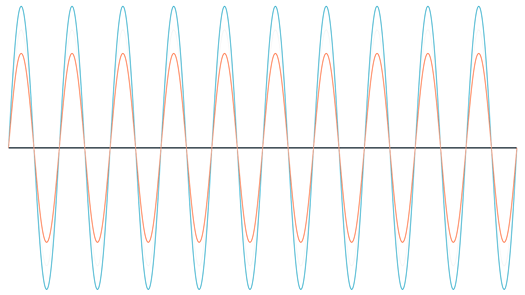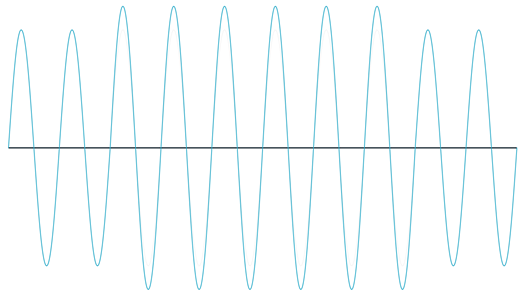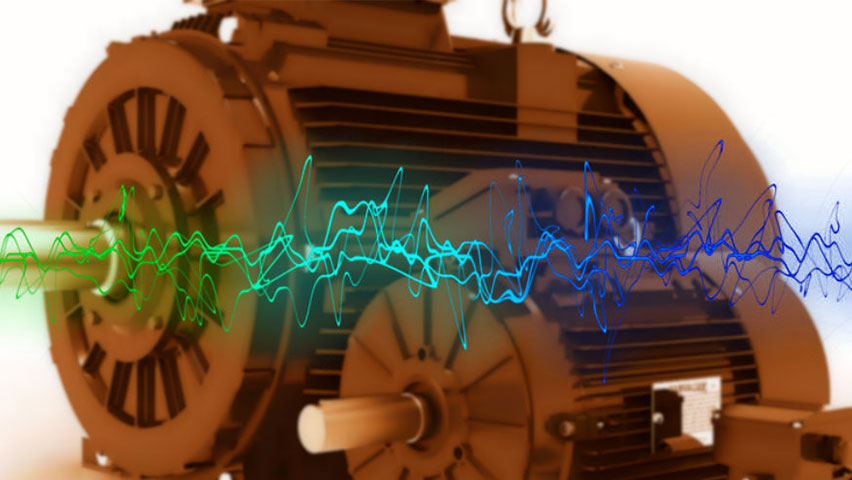You’re sitting in a meeting, looking back and forth between your notebook and the current speaker. Wait a minute — did the lights just flicker?
You look at the lights intently. A few seconds later, they do it again — definitely a flicker.
Then, you receive a notification on your cellphone via your EAM: “Motors@Work detects Blowers #1, #2, #3 & #4 operating 19.1% below rated voltage.”
National Electrical Manufacturers’ Association (NEMA) standard MG1 states that “motors shall operate successfully” so long as the supplied voltage is within ±10% of rated [§ 12.44]; i.e., from 414 Volts up to 506 Volts for a nominally 460-Volt motor. But “successful” doesn’t mean efficient or reliable operation: in MG1, NEMA states that speed and torque performance — as well as motor life — may be negatively affected by voltage variations.
Voltages outside these ranges are fairly common — if only momentarily. Half of all utilities report their customers experience potentially disruptive voltage deviation issues — excluding major events and total outages — 9 to 20 times per year.[1]
So, what happens to your motor when your voltage deviates from this range? What about momentary — i.e., less than one second — sags, swells, transients, and interruptions?
Here’s a quick primer on how each of these power quality problems affect your motors, and how Motors@Work helps our clients identify, troubleshoot, and resolve a voltage deviation issues that otherwise would have gone undetected without Motors@Work’s timely condition-monitoring alerts.
OVER-VOLTAGE EVENTS
Transients, swells, and over-voltage deviations occur when RMS voltages exceed 110% of nominal. Per IEEE and IEC standards, we use different terms to describe the event depending on the duration of the deviation:
- Transients, unofficially called surges and spikes, are sudden voltage spikes of extremely short duration — less than 50 nanoseconds, or billionths of one second. Transients are classified as impulsive or oscillatory depending on the shape of the waveform [see Figure 1, graphs (E) and (F)], and then by “speed” — a ratio of the time it takes to hit peak voltage versus the time it takes to return to normal voltage. Transients that exceed the voltage rating for the motor epoxy may lead to arcing between windings, reducing the life of your motor’s windings.
- Voltage increases that rise and return to normal voltage in less than one second are called swells.
- Persistently high voltages that last more than one second are called overvoltage deviations.
In trainings and site visits, I’ve often heard misguided motor users state that they run high voltages (e.g., 490 Volts) in order to reduce motor current draw, thereby decreasing motor temperature and extending motor life. This is a myth.
Operating your motor at higher-than-nominal voltages pushes the motor’s iron core towards magnetic saturation — the maximum magnetization that the material can hold, or maximum magnetic flux it can produce. To maintain equilibrium between voltage, frequency, and magnetization described in Faraday’s Law, a motor operated at higher-than-nominal voltages will continue trying to increase magnetic flux production. However, as the motor approaches saturation, it becomes harder and harder to produce each incremental unit of magnetic flux. So, as it tries to increase magnetic field strength, your motor actually draws more current, causing higher core (I2R) losses (i.e., lower efficiency) and hotter motor temperatures — and we’ve already talked about what heat does to motors…
FIGURE 1 Depictions of over- and under-voltage events

(A) Normal (gray) plus 10% over- (blue) and under (orange) voltages [10 cycles]

(B) An interruption lasting approximately 1.75 cycles [10 cycles]

(C) A 10% voltage swell [10 cycles]

(D) A 10% voltage sag [10 cycles]

(E) An impulsive transient [1 cycle]

(F) An oscillating transient [1 cycle]
UNDER-VOLTAGE EVENTS
On the other hand, interruptions, sags, and under-voltage deviations all occur when RMS voltages fall below 90% of nominal. Like over-voltage events, we use different terms to describe the event depending on its duration:
- Interruptions are complete losses of voltage lasting less than two minutes; a loss of power lasting more than two minutes is considered an outage. Interruptions are further classified as instantaneous (less than 30 cycles), momentary (30 cycles to 2 seconds), and temporary (2 seconds to 2 minutes).
- When voltage reduces and then return to normal voltage in less than one minute are called sags (IEEE) or dips (IEC).
- Persistently low voltages that last more than one minute are called undervoltage deviations.
Whereas higher-than-nominal voltages push your motor towards saturation, lower-than-nominal voltages reduce the strength of the motor’s magnetic field and thus its ability to produce torque at rated speeds. Since torque and slip are proportionate to the square of voltage, a 10% reduction in voltage (e.g., operating a 460-Volt motor at 414 Volts) reduces torque by 19% (i.e., 90%2 = 81%); a 20% reduction in voltage restricts torque production to 64% of its full-potential potential [see Figure 2].
Operating below rated voltage may have minimal effect on motors running at less than 50% of its rated load and those starting up in low inertia applications (many soft starters work by ramping up voltage as the motor starts) — if anything, these motors may see improved efficiency through lower core losses. However, motors operating near rated load or starting high-inertial loads below rated voltage will experience higher current draws, lower torque, and longer start times — resulting in reduced starting ability, lower load capacity, more overheating, and a shorter motor life.

FIGURE 2 Speed and torque performance of induction motors operated above and below nominal voltage.
A 19.1% reduction in voltage means these blowers can only produce about 65% of nominal torque at rated speed. And since air flow, and the horsepower required to produce it, is proportionate to the cube of speed, that means you may not be producing enough air. So, you log in to SCADA to check air flow levels and view the latest voltage measurements.
Thankfully, this event appears to have been a sag — voltages, and air flow, have returned to normal levels. You make a note to keep an eye on the voltage because a longer or more severe power quality event may cause problems on a high-production day.
Motors@Work’s continuous, near-real-time condition monitoring alerts catches potentially motor-damaging conditions that would’ve gone unnoticed otherwise. Additionally, our help content and content-rich alerts reduce the time required to troubleshoot the issue.
How will condition monitoring benefit your organization? Email Nicole at info@motorsatwork.com to learn more.
[1] 25% of utilities experience fewer than nine events per year, while 25% report more than 20 events per year. Source: EIA-861S 2016.


